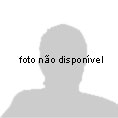XINFORMAÇÕES SOBRE DIREITOS AUTORAIS
As obras disponibilizadas nesta Biblioteca Digital foram publicadas sob expressa autorização dos respectivos autores, em conformidade com a Lei 9610/98.
A consulta aos textos, permitida por seus respectivos autores, é livre, bem como a impressão de trechos ou de um exemplar completo exclusivamente para uso próprio. Não são permitidas a impressão e a reprodução de obras completas com qualquer outra finalidade que não o uso próprio de quem imprime.
A reprodução de pequenos trechos, na forma de citações em trabalhos de terceiros que não o próprio autor do texto consultado,é permitida, na medida justificada para a compreeensão da citação e mediante a informação, junto à citação, do nome do autor do texto original, bem como da fonte da pesquisa.
A violação de direitos autorais é passível de sanções civis e penais.
As obras disponibilizadas nesta Biblioteca Digital foram publicadas sob expressa autorização dos respectivos autores, em conformidade com a Lei 9610/98.
A consulta aos textos, permitida por seus respectivos autores, é livre, bem como a impressão de trechos ou de um exemplar completo exclusivamente para uso próprio. Não são permitidas a impressão e a reprodução de obras completas com qualquer outra finalidade que não o uso próprio de quem imprime.
A reprodução de pequenos trechos, na forma de citações em trabalhos de terceiros que não o próprio autor do texto consultado,é permitida, na medida justificada para a compreeensão da citação e mediante a informação, junto à citação, do nome do autor do texto original, bem como da fonte da pesquisa.
A violação de direitos autorais é passível de sanções civis e penais.
Coleção Digital
Título: THE DIGITAL TWIN IN URBAN PLANNING AND MANAGEMENT: A KEY ASSET FOR TODAY S CLIMATIC, SOCIAL AND TECHNOLOGICAL DEMANDS Autor: PEDRO RATTES PASCOLI
Instituição: PONTIFÍCIA UNIVERSIDADE CATÓLICA DO RIO DE JANEIRO - PUC-RIO
Colaborador(es):
MARCELO ROBERTO VENTURA DIAS DE MATTOS BEZERRA - ADVISOR
Nº do Conteudo: 68684
Catalogação: 02/12/2024 Liberação: 02/12/2024 Idioma(s): PORTUGUESE - BRAZIL
Tipo: TEXT Subtipo: THESIS
Natureza: SCHOLARLY PUBLICATION
Nota: Todos os dados constantes dos documentos são de inteira responsabilidade de seus autores. Os dados utilizados nas descrições dos documentos estão em conformidade com os sistemas da administração da PUC-Rio.
Referência [pt]: https://www.maxwell.vrac.puc-rio.br/colecao.php?strSecao=resultado&nrSeq=68684&idi=1
Referência [en]: https://www.maxwell.vrac.puc-rio.br/colecao.php?strSecao=resultado&nrSeq=68684&idi=2
Referência DOI: https://doi.org/10.17771/PUCRio.acad.68684
Resumo:
Título: THE DIGITAL TWIN IN URBAN PLANNING AND MANAGEMENT: A KEY ASSET FOR TODAY S CLIMATIC, SOCIAL AND TECHNOLOGICAL DEMANDS Autor: PEDRO RATTES PASCOLI
Nº do Conteudo: 68684
Catalogação: 02/12/2024 Liberação: 02/12/2024 Idioma(s): PORTUGUESE - BRAZIL
Tipo: TEXT Subtipo: THESIS
Natureza: SCHOLARLY PUBLICATION
Nota: Todos os dados constantes dos documentos são de inteira responsabilidade de seus autores. Os dados utilizados nas descrições dos documentos estão em conformidade com os sistemas da administração da PUC-Rio.
Referência [pt]: https://www.maxwell.vrac.puc-rio.br/colecao.php?strSecao=resultado&nrSeq=68684&idi=1
Referência [en]: https://www.maxwell.vrac.puc-rio.br/colecao.php?strSecao=resultado&nrSeq=68684&idi=2
Referência DOI: https://doi.org/10.17771/PUCRio.acad.68684
Resumo:
The increasing presence of digitalization in all areas of study and work is
equally evident in urban planning and management (UPM). Globally, the complex
reality of today s cities, marked by continuous urban population growth and the
ongoing consequences of climate change, demands extensive urban
requalification. This requalification involves managing a vast amount of
information, addressing socially sensitive issues, and carrying out forceful,
surgical, contextualized, and immediately effective physical interventions. This
work explores the potential role of Digital Twins (DTs) in this digital
transformation of cities. Through bibliographic research and consultations with
specialized entities, the context of the PGU was characterized, a conceptual
leveling of the DTs was carried out, and the technologies involved in its
development and application were presented. By studying notable case examples,
the application of DTs as a tool to address the identified challenges was evaluated.
Some aspects aligned with current UPM emerged from this discussion: intuitive
access to rich, accurate, and up-to-date information; technological integration;
transparent and participatory management; realistic simulation of projects and
climate emergency scenarios. The conclusions of this work suggest the
development of the Integrated Information Environment (IIE), a collaborative and
multi-layered platform that allows access and management by multiple actors
through data integration in a physical and ontological organization. This tool
concentrates information and processes, promotes accessibility, minimizes social
and environmental impacts, and generates temporal and resource efficiency.
In the early part of the last century, only 10 per cent of the world s population lived
in cities. However, by around 1950, when two-thirds of the global population still
resided in rural communities, an increase in urbanization was observed. This
process has intensified over the past two decades, and by 2007, we reached a
significant milestone: for the first time, the urban population surpassed the rural
population (UNITED NATIONS, 2019). With the urban population continuously growing at a faster rate than the rural population, today approximately 56 per cent of the
global population – 4.4 billion people – resides in cities. By the end of the
sustainable development agenda in 2030, the proportion of the population living
in cities is expected to reach 60 per cent. With projections indicating a continued
increase in this percentage in the medium term, by 2050, after just one century of
intense and progressive urbanization, the situation will be reversed, with two thirds of the world s population living in urban areas. This will result in an
additional 1.2 million square kilometers of urban area worldwide (THE WORLD
BANK, 2020; UNITED NATIONS, 2019).
| Descrição | Arquivo |
| COMPLETE |






